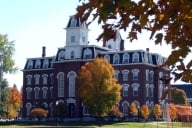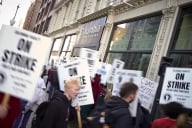You have /5 articles left.
Sign up for a free account or log in.
Universities are reporting that students arriving in the United States are experiencing delays at border checkpoints since the implementation of new procedures requiring the verification of Student and Exchange Visitor Information System (SEVIS) status at border checkpoints. As first reported by the Associated Press, the new procedures were put in place after it was found that an international student accused of aiding in the destruction of evidence related to the Boston Marathon bombings was allowed to reenter the country on a terminated visa. It has long been a problem that primary inspectors at border checkpoints have not had real-time access to data input by universities into the SEVIS system (data that would indicate, among other things, whether someone with a student visa is still registered as a student). Information about SEVIS status can only be verified when a student is referred to secondary inspection – which is now happening routinely.
The associated problems have been particularly acute at universities near U.S. borders, which students commute to from Canada and Mexico, respectively. "Our students have to go from initial inspection to secondary inspection each and every time they come across the border, which is daily,” said Gary Edens, vice president for student affairs at the University of Texas at El Paso, which has more than 500 students who cross the Mexico-U.S. border to come to class. "Secondary inspection at this point is taking anywhere from 30 minutes to three hours, and this is on top of the wait the students had on the bridge as part of their normal wait, which can be an hour to two hours. You can imagine a student who’s trying to make it to an 8:00 class: What time does that student need to leave?”
“The policy [of verifying SEVIS status] is an absolutely appropriate policy to have, and we’re completely supportive of the policy itself,” Edens said. “It’s the implementation that may not take into account the unique circumstances of individual universities.”
At D’Youville College, in Buffalo, New York, students commuting from Canada have also been consistently required to undergo secondary inspection, and have faced delays generally ranging from 20 minutes to an hour on weekdays, according to Laryssa Petryshyn, the director of the international student office. She said that her contacts at the border confirmed they were acting on a directive from Washington to verify the status of every F, J, and M visa holder (which would include not only students but also exchange scholars). Wayne State University, in Detroit, a tunnel away from Canada, has also advised border commuters to add 1.5 hours to their trip.
“Most international students might fly out of the country once or twice a year, some not at all, but the border commuter students who come in every single day, this is a major impact for them,” Petryshyn said. “They’ve all been understanding. But they’re concerned that this is going to keep going on and on and on, that there’s not going to be a fix to this problem.”
Officials at the U.S. Department of Homeland Security are not commenting on specific changes in procedure and policy. However, it is known that the department is working on a technological fix that would allow Customs and Border Protection (CBP) officials to access and verify SEVIS data at primary inspection checkpoints: Politico quoted Secretary Janet Napolitano as saying that a technological solution could be ready by the end of this month. Bruce Gawtry, a retired CBP supervisor who now advises colleges on immigration issues, said he’s also hearing that it will take two to three weeks to get everything in place.
“One big positive point is that it’s not the rush season now for students and exchange visitors. They’re generally coming in July, August and September. If they can get the internal upgrades done in a few weeks, it may not have a major impact,” Gawtry said.
Since the new procedures were put in place last week, there have also been reported delays of 30 minutes to three hours at major airports, including those in Los Angeles, Miami and San Francisco, due to F, J and M visa holders being sent to secondary inspection. An internal DHS memo reportedly calls for the verification of students' and scholars’ SEVIS status pre-arrival based on information on flight manifests whenever possible. However, Gawtry said that the effectiveness of this pre-screening mechanism depends on CBP’s capacity. “It’s hard to say how well the airports are equipped to do the APIS [Advanced Passenger Information System] checks and clear people while they’re on the flight,” he said, adding that if there are two people doing the checking and 40 students or scholars on a flight, there will most certainly be delays. “That’s an internal thing, how many people are assigned to passenger analysis," he said.
“The SEVIS system presumes that all of the people who need access to the SEVIS database have it, and one of the problems that they’ve had since the inception of this program 10 years ago is that they haven’t been able to make that real,” Victor C. Johnson, a senior adviser for public policy for NAFSA: Association of International Educators, said in an interview. “Yes, we need to have customs officers in primary inspection with access to SEVIS. What they have now is they have some data from SEVIS but they don’t have actual access to the system. This has needed to be fixed for years and years and years."
“The only good thing is that it has finally gotten up to the president and the secretary” in terms of priority, he said.








